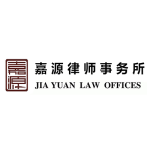SECTION 1: Market overview
1.1 Please provide an overview of the cross-border financing market in your jurisdiction.
Due to its foreign exchange control rules and non-availability of competitive finance products, Mainland China is clearly not a jurisdiction a non-Chinese company would normally look at for raising funds. However, it is where most financing for Chinese companies' overseas construction or project finance projects (the overseas construction financing sector), and Chinese companies' overseas investment (the overseas investment financing sector) are negotiated and concluded.
The overseas construction financing sector is dominated by Chinese banks. There are two basic financing structures. First, buyer's credit, where a Chinese contractor brings Chinese banks to its overseas employer and the overseas employer borrows from the Chinese banks to pay the Chinese contractor for its work. Second, seller's credit, where a Chinese contractor borrows from Chinese banks to finance its work, so that the overseas employer may defer its payment for the Chinese contractor's work for a longer period. Buyer's credit is more often granted based on an overseas employer's creditability and financial capacity, while seller's credit is based more on a Chinese contractor's creditability and capacity. In both structures, sufficient security needs to be taken from the overseas employer and insurance from Sinosure will be required.
By comparison, the financing demands, lenders and financing structures in the overseas investment financing sector are diversified. In addition to local Chinese banks, which are the conventional lenders, international banks, other financial institutions (such as trust and securities houses) and private equity funds actively provide financing. In general, in this sector banks will provide senior debt, such as a normal corporate loan, while other financing institutions and private equity funds are more flexible. In addition to senior debt, banks will also consider subordinated loans and even equity financing. As one can usually expect, the cost of subordinated loans and equity financing is usually high.
Another very important difference between the two sectors is the application of different foreign exchange control rules. The ultimate use of the loans in the overseas construction financing sector is mainly trading payments, which are not restricted under Chinese foreign exchange rules. The ultimate use of financing in the overseas investment financing sector is overseas investment, which is subject to prior regulatory control by Chinese authorities. Consequently, one does not need to worry about foreign exchange control issues when designing an overseas construction financing, while foreign exchange control is one of the key issues that must be properly dealt with when designing an overseas investment financing. An overseas investment financing can easily fall apart because of foreign exchange control constraints.
1.2 What have been the key trends or developments in cross-border financing in your jurisdiction over the past 12 months?
In the overseas construction financing sector, the seller's credit structure has started to become popular.
From November 2016, the government tightened its regulatory control regarding Chinese overseas investment. Bank loans cannot be drawn down until the regulatory approvals for the overseas investment are granted. Since the timing for obtaining regulatory approvals is much longer than the deal closing schedule expected by overseas sellers, this has given rise to fast-increasing demands for bridge financing from an overseas jurisdiction; these do not require PRC security (if PRC security is required, the same regulatory control will apply).
1.3 Have there been interesting changes in the structure of the banking sector in your jurisdiction?
As far as cross-border financing is concerned, we have not noticed any interesting changes.
SECTION 2: Financing structures
2.1 Briefly outline some recent notable transactions involving your jurisdiction, highlighting any interesting aspects in their structures and what they might mean for the market.
In the second half of 2016, China Nonferrous Metal Industry's Foreign Engineering and Construction Co Ltd entered into a seller's credit financing for its EPC construction project in the Democratic Republic of the Congo. In the financing structure, the employer's EPC payment obligation was deferred by way of issuing payment orders and these payment orders were assigned to banks for the purpose of obtaining financing. This is an innovative structure created for overseas construction financing and may soon become popular on the market, since it is one of the few structures workable for employers, contractors and lenders at the same time as being acceptable to Sinosure.
2.2 Have there been any significant developments in the way cross-border financing transactions are structured or in the way borrowers and/or lenders are participating in the market?
For a Chinese company's overseas investment/acquisition, a typical financing structure is overseas lending secured by Chinese guarantee, which means that a Chinese buyer provides satisfactory security to a PRC bank, the PRC bank provides bank guarantee to an overseas bank, then the overseas bank extends loans to the overseas subsidiary of the Chinese buyer.
Before November 2016, overseas lending secured by Chinese guarantee was only subject to quotas (i.e. an overall amount of bank guarantee that a Chinese bank can provide to overseas banks) assigned to banks; this meant a Chinese bank could lend through such a structure as long as it has quotas.
From November 2016, the government tightened its regulatory control regarding Chinese overseas investment. On the one hand, a Chinese company's overseas investment/acquisition will be subject to stricter and more time-consuming prior review by the relevant government authorities (outbound investment approval). On the other hand, if the purpose of the loan is to finance a Chinese company's overseas investment/acquisition, Chinese banks can no longer extend overseas loans secured by a Chinese guarantee until the outbound investment approval is obtained.
In overseas acquisitions, sellers usually expect to close a deal in a short period, but this schedule can hardly be met by Chinese buyers due to the length of time required to obtain outbound investment approval. As such, the buyer must resort to short-term bridge financing to close a transaction before the outbound investment approval is obtained and the standard overseas lending secured by Chinese guarantee from banks is in place. Since short-term bridge financing does not have to be secured by Chinese entities and the bridge financing provider requires a certain level of equity contribution to the borrower to subordinate the bridge financing, the financing often needs to be accompanied by third party equity investments made with funds readily available outside the PRC. As the risk exposure of the bridge financing is usually not acceptable to commercial banks, bridge financing is often provided by non-bank financial institutions or private equity funds.
SECTION 3: Legislation and policy
3.1 Describe the key legislation and regulatory bodies that govern cross-border financing in your jurisdiction.
The key regulatory bodies are the China Banking Regulatory Commission, which is in charge of banking activities and the State Administration of Foreign Exchange, which is in charge of foreign exchange control.
3.2 Have there been any recent changes to regulations or regulators that may impact the cross-border financing market and what impact do you expect them to have?
See the information provided under 2.2 above.
3.3 Are there any rules, legislation or policy frameworks under discussion that may impact lenders or borrowers involved in cross-border financing in your jurisdiction?
We are not aware of any such discussions.
SECTION 4: Market idiosyncrasies
4.1 Please describe any common mistakes or misconceptions that exist about the financing market in your jurisdiction.
In an overseas lending secured by Chinese guarantee structure, the Chinese company will first provide a security to a Chinese bank (first security), the Chinese bank will then provide a bank guarantee to an overseas bank (second security) and finally the overseas bank will extend the loan to the overseas subsidiary of the Chinese company. The second security provided under this structure is subject to registration with the PRC foreign exchange authority. Most people often mistakenly assume the first security as the one subject to the registration.
4.2 Are there frequently asked questions or often overlooked areas from parties involved in cross-border financings in your jurisdiction?
In the overseas construction financing sector, the most frequently asked question is whether the debt is insurable by Sinosure.
In the overseas investment financing sector, the most frequently asked question is whether the overseas investment financing is workable in light of the overseas investment control policies.
4.3 Are there any classes of assets over which security cannot be taken or regulations specific to your jurisdiction governing the taking of security over certain classes of assets that lenders should be aware of?
In the PRC there are certain assets where security cannot be taken over, these include the following assets:
ownership of land;
the land-use right to the collectively-owned land owned (subject to a few exceptions);
educational facilities, medical and health facilities of schools, kindergartens, hospitals and other institutions or public organizations established in the interest of the public and other facilities in the service of public welfare;
property in relation to which the ownership or the right of use is unknown or disputed;
property sealed up, distrained or placed under surveillance in accordance with law; or
other property that may not be mortgaged as prescribed by law.
4.4 What measures should be taken to best prepare for your market idiosyncrasies?
The non-recourse project finance concept is rarely accepted by Chinese lenders. Chinese lenders always ask for sufficient security.
Change of foreign exchange control policies will significantly impact on the workability of a cross-border financing deal. Such change needs to be closely monitored.
SECTION 5: Practical considerations
5.1 Briefly explain the downstream, upstream and cross-stream guarantees available in your jurisdiction, with reference to any specific restrictions or limitations.
A Chinese company can provide cross-border guarantee only for overseas entities in which it has direct or indirect equity investment relation.
Security provided by overseas entities works only for local Chinese loans made by financing institutions. In other words, local Chinese loans made by other lenders cannot take security provided by overseas entities.
5.2 Are there any specific issues creditors should be mindful of regarding a bankruptcy and restructuring situation?
Enforcement of security over assets located in the PRC is lengthy and difficult.
5.3 Do foreign debt quotas apply in your jurisdiction and is offshore financing to domestic entities monitored?
The PRC applies foreign debt quotas and closely monitors offshore financing to domestic entities. As per the latest policy issued in 2017, the total balance of offshore borrowing that a domestic company can raise is limited to two times its net assets.
5.4 Describe your jurisdiction's relationship with non-performing loans (NPLs), including volume of outstanding NPLs and techniques/challenges in managing them.
In the past, when dealing with NPLs, commercial banks have usually written-off or assigned the NPLs. Write-offs are often difficult to implement on a large scale because of various constraints, such as the state-owned assets management rule, finance and tax regulations. NPLs were also sometimes sold to an asset management company. Without a large-scale equity financing, the asset management companies could not take NPLs on a large scale. To deal with those issues, some commercial banks have started to dispose NPLs through asset securitisation. Recently, commercial banks were encouraged to swap debt for equity.
SECTION 6: Outlook
6.1 What are your predictions for the next 12 months for cross-border financing in your jurisdiction? How do you expect legal practice to respond?
The government's control on overseas investment/acquisition will continue but will relax to a certain extent. Legal advisors need to closely follow the changes and propose appropriate structures in light of the changes.
About the author |
||

|
|
Liu Yue Partner, Jia Yuan Law Offices Beijing, China T: +86 10 66413377 F: +86 10 66412855 Liu Yue is a partner in Jia Yuan Law Offices and leads the international practice. With more than 16 years of cross-border experience, Liu Yue's practice focuses on advising Chinese and foreign clients on a broad range of matters including foreign direct investment/M&A, outbound investment, project finance/infrastructure concession and construction. In the past few years, Liu Yue has advised on numerous cross-border transactions, both from an investment/project perspective and a financing perspective. These include Midea's acquisition of Kuka and NFC's EPC and financing for the Congo RTR project. |

